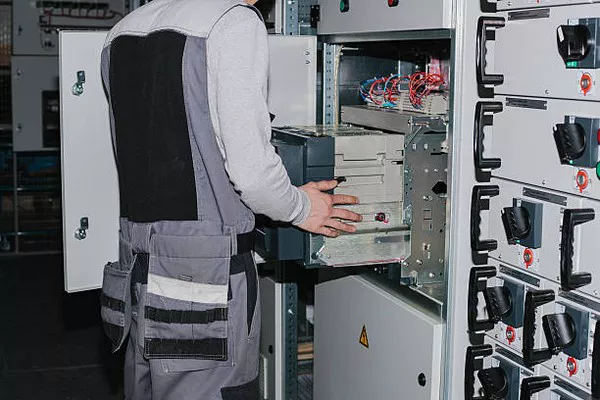Electrical transformers, those ubiquitous devices quietly humming away in substations and utility poles, play a crucial role in our modern world. But what exactly lies beneath their unassuming exteriors? Join us on a journey into the heart of these enigmatic machines as we unravel the mysteries of what lies inside an electrical transformer.
Introduction to Electrical Transformers
Before we delve into the inner workings of transformers, let’s first establish what they are and why they’re essential. At their core, transformers are devices designed to transfer electrical energy between circuits through electromagnetic induction. This process enables efficient transmission of power across different voltage levels, a task fundamental to the functioning of electrical grids worldwide.
Basic Structure: Peeling Back the Layers
At first glance, a transformer may appear as nothing more than a nondescript box. However, within this seemingly simple enclosure lie several critical components. Chief among these are the primary and secondary coils, meticulously wound around a central core. The core itself, typically constructed from high-permeability materials like iron or steel, serves as the conduit for magnetic flux, facilitating efficient energy transfer. Surrounding these components is a layer of insulation, crucial for preventing electrical breakdown and ensuring the transformer’s safe operation.
Primary Components Demystified
Let’s take a closer look at the primary components residing within the transformer’s confines:
Coils: The primary and secondary coils are the heart of the transformer, each playing a distinct role in the energy transfer process. When an alternating current flows through the primary coil, it generates a fluctuating magnetic field, inducing a voltage in the secondary coil. The difference in the number of turns between these coils determines the transformer’s voltage transformation ratio.
Core: Acting as the magnetic pathway, the core directs the flow of magnetic flux generated by the coils. Its composition and design are critical factors influencing the transformer’s efficiency and performance.
Insulation: Surrounding the coils and core is a layer of insulation, typically composed of materials like paper, Mylar, or oil-impregnated pressboard. This insulation serves to safeguard against electrical faults and ensure the transformer’s longevity.
Unlocking the Working Principle
Now that we’ve acquainted ourselves with the transformer’s internal anatomy, let’s explore how it operates:
Electromagnetic Induction: At the heart of every transformer lies the principle of electromagnetic induction. As alternating current flows through the primary coil, it creates a changing magnetic field, inducing a voltage in the secondary coil through Faraday’s law of electromagnetic induction.
Step-Up and Step-Down Transformation: Transformers are adept at altering voltage levels to suit various applications. By adjusting the ratio of turns between the primary and secondary coils, transformers can step up or step down the incoming voltage, facilitating efficient power distribution across different voltage levels.
Efficiency and Losses: Despite their remarkable efficacy, transformers are not without their limitations. Factors such as resistance in the coils and core losses can lead to energy dissipation and reduced efficiency. Minimizing these losses through careful design and material selection is essential for optimizing transformer performance.
Exploring Transformer Variants
Transformers come in a variety of shapes and sizes, each tailored to specific applications:
Distribution Transformers: Found in local distribution networks, these transformers play a crucial role in regulating voltage levels for residential and commercial consumers.
Power Transformers: Towering behemoths dotting the landscape of high-voltage transmission lines, power transformers are instrumental in stepping up voltage levels for long-distance power transmission.
Instrument Transformers: Serving as the eyes and ears of the electrical grid, instrument transformers are used for metering and protection purposes, providing accurate measurements and safeguarding against overloads and faults.
Embracing Innovation: Advanced Features and Technologies
As technology advances, so too do transformers. Modern iterations boast an array of advanced features:
Tap Changers: These ingenious devices allow for on-the-fly adjustment of the transformer’s output voltage, ensuring optimal performance under varying load conditions.
Cooling Systems: To prevent overheating and maintain optimal operating temperatures, transformers employ various cooling mechanisms, ranging from oil-immersed baths to forced-air cooling systems.
Smart Transformers: Incorporating cutting-edge digital monitoring and control capabilities, smart transformers represent the next frontier in grid optimization and efficiency, enabling real-time monitoring and predictive maintenance.
Safety First: Navigating the Hazards
While transformers are marvels of engineering, they pose inherent risks that must be addressed:
Electrical Hazards: Working with high-voltage equipment demands utmost caution. Proper training and adherence to safety protocols are imperative to mitigate the risk of electrical shock and arc flash incidents.
Maintenance Practices: Regular inspection and maintenance are essential for ensuring transformer reliability and longevity. From oil analysis to thermographic imaging, proactive maintenance measures can help identify potential issues before they escalate.
Applications Across Industries
From powering our homes and businesses to driving industrial machinery, transformers find myriad applications:
Power Generation and Distribution: At the heart of every electrical grid lies an intricate network of transformers, facilitating the seamless transmission and distribution of power from generation plants to end consumers.
Electronics and Appliances: From laptops to refrigerators, transformers are omnipresent in the devices we rely on daily, converting voltage levels to meet the demands of modern electronics.
See Also Step-Down Transformers: Do They Increase or Decrease Voltage?
Conclusion:
As we conclude our exploration into the inner workings of electrical transformers, we’re left with a newfound appreciation for these unsung heroes of the electrical grid. From their humble beginnings as coils of wire to their pivotal role in powering our modern world, transformers exemplify the marriage of science and engineering. So, the next time you pass by a substation or glimpse a utility pole, take a moment to ponder the silent symphony unfolding within—an ode to the transformative power of electromagnetic induction.

